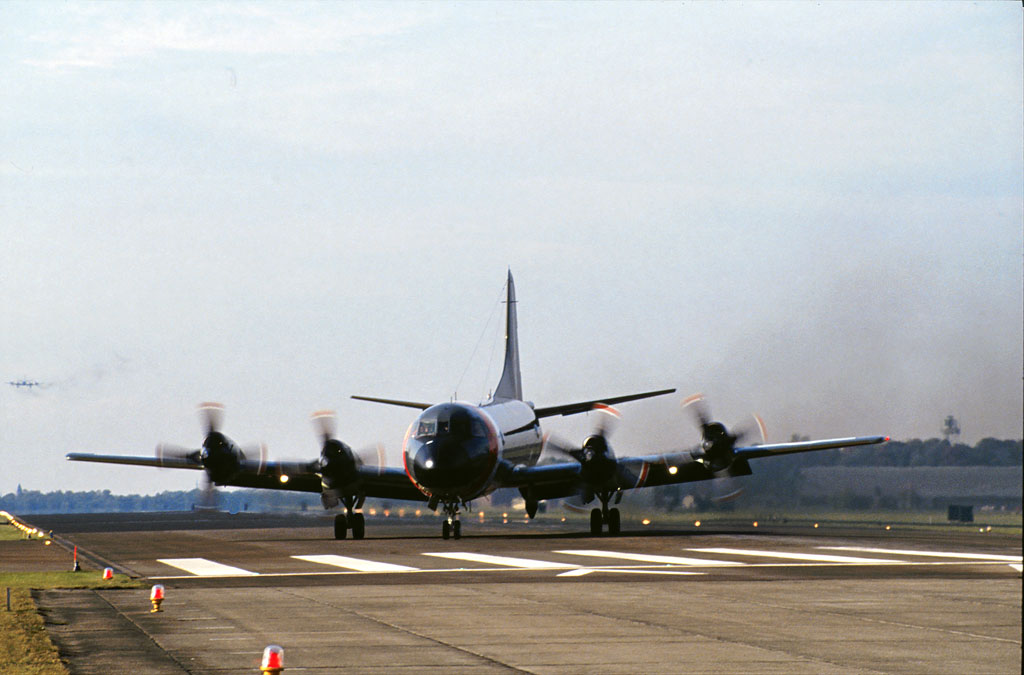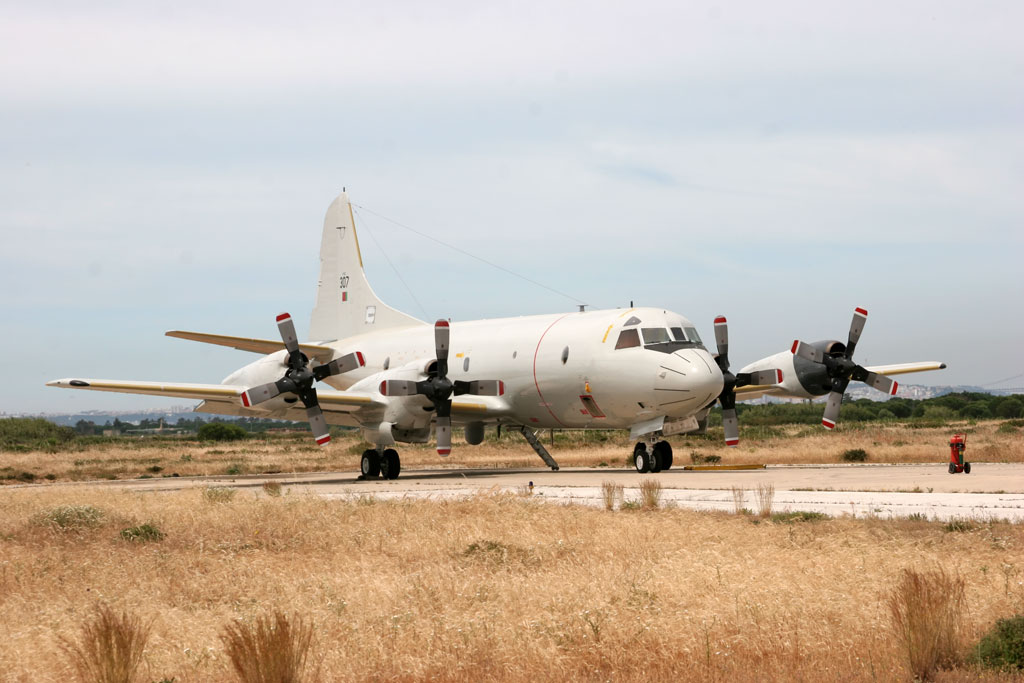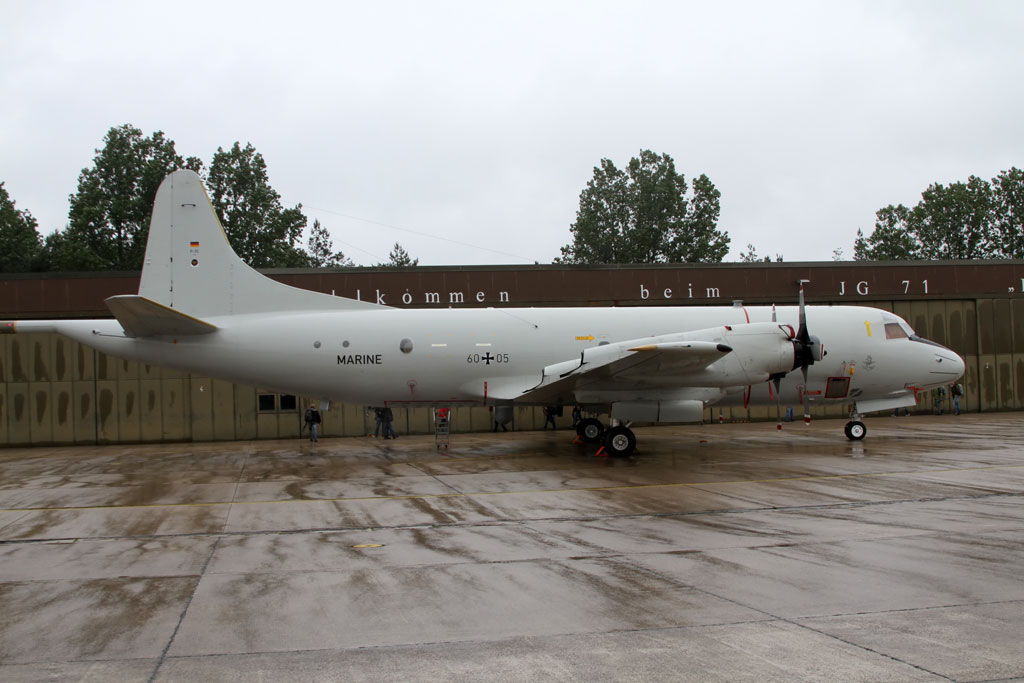|
|
|
|
|
|
Service history of the Lockheed P-3C Orion with the MLD
The Dutch "Marineluchtvaartdienst" (MLD)
Dutch Naval Aviation Service first expressed its interest in the
Lockheed P-3 Orion after the disestablishment of her only aircraft
carrier, the HrMs Karel Doorman, in 1968. In a bid to replace the S-2
trackers used by the MLD on the Karel Doorman. At that point in time the
political decision was made to by nine French-built Breguet Br1150
Atlantic.
With the planned replacement of the SP-2H Neptune a tender was issued in
1974 for thirteen new marine patrol aircraft, replacing the BR1150
Atlantic at the same time. Two contender where dropped early in the
process the British Nimrod and the French Breguet Altantique NG. At the
end of the selection process a order was placed for thirteen Lockheed P-3CII
Orion aircraft.
Delivery to the Royal Netherlands Navy
(MLD)
Before the delivery stated in the first crews went to the USA for
conversion training. The first Dutch crew members started a conversion
course with VP-30 at NAS Jacksonville in September 1981 on the Lockheed
P-3CII Orion. Lockheed delivered the first MLD-Orion to the Dutch
Liaison Team with VP-30.
The first four Lockheed P-3CII Orion's were delivered on 21 July 1982
and the last one on 14 September 1984. They received serial numbers 300
to 312.
The squadron to resave the Lockheed P-3CII Orion was 230 squadron
replacing its aging Lockheed SP-2H Neptune's. After That 321 squadron
resaved the Lockheed P-3CII Orion as a replacement for its BR1150
Atlantic.
With the procurement off the Lockheed P-3CII Orion a total update
program for NAS Valkenburg was started including; new workshops,
hangars, a mission support centre, and a new air traffic control tower
were built, while the runways, taxi-tracks and platforms were improved
to modern standards.

Operational history
The Lockheed P-3CII Orion's were the eyes and ears of the Dutch Navy
between 1982 and 2005. Both 320 and 321 squadrons equipped with the
Lockheed P-3CII Orion, operated its aircraft from a central pool "MARPAT"
(Group Maritime Patrol Aircraft). The training squadron VSQ 2 also used
aircraft from this pool when needed.
The main mission for the Dutch P-3s used to be ASW of course,
controlling the Northern seas and protecting the sea lanes between
Europe and North America. But the aircraft were also used for several
other kinds of operations, For example as a communications- and
SAR-platform for RNLAF F-16s on route to low-flying exercises in Goose
Bay.
In peace time the MLD flew patrol missions over the North Sea and
northern part of the Atlantic Ocean, keeping an eye on shipping traffic
and hunting after smugglers and polluters'. Other tasks were flying SAR
(search and rescue) and coastguard missions
The Orion's participated almost immediately afters there arrival with
participation's in international exercises. One of the first was a NATO
exercise "Ocean Safari" in June 1983. in witch 320 squadron detached
four Orion's to Lajes at the Azores.
Next to these exercises they take part in several operational missions.
Dutch Orion's took up residence at NAS Sigonella (Italy) to take over a
part of the USN responsibilities for the Mediterranean area as long as
USN P-3s were involved directly in the Gulf War. At the same time during
the Gulf War P-3 # 306 was fitted with eight stretchers and eight
passenger seats, to evacuate casualties from the area if necessary.
When the Cold War ended, the P-3s became available for new missions.
Since 1992 Orion's conducted anti-narcotics operations over the Caribbean
out of Hato airfield on Curacao. Originally known as "Operation PC3"
(for Command, Control and Communications) the anti-narcotics mission is
now called "Operation Fair Trade" and is conducted in close co-operation
with the USN/USCG Task Force 4 and the Dutch Air Force 336 Squadron, which
operates the Fokker F-27MPA Maritime. Until they booth were replaced by
two Fokker 60 transport planes modified for coastguard duties.
Another new kind of mission are the fishery-, pollution- and
environmental patrol missions on behalf of the Dutch Coast Guard. These
missions are frequently flown over the Dutch territorial part of the
North Sea. Police officers join the MLD-crews on these flights. Since
July 1992 Orion's where detached to NAS Sigonella as the Dutch
contribution to the multi-national "Operation Sharp Guard". They where
patrolling the Adriatic Sea to maintain the UN embargo against former
Yugoslavian states. "Sharp Guard" was the first occasion in which Dutch
P-3s were ever operating with "live torpedoes" in their weapons bay. A
similar mission was flown over the area around Haiti in support of
"Operation Support Democracy". One P-3 flew reconnaissance missions over
Afghanistan, assisting allied forces in their hunt for Al Qaida
terrorists.
In January 1999 the Ministry of Defence decided to withdraw three P-3s
from service. They were put in open storage on the Portuguese airbase of
Alverca. The other aircraft would receive a Capability Upkeep Programme
(CUP) starting in 2002, this was cut short by a decision to sell the
Orion in 2003.
|
|
Squadrons equipped with the SP-2H
Neptune |
|
320 Squadron
After the war 320 squadron was temporarily disbanded on May 1, 1946. On
March 22, 1949 it was re-activated again at NAS Valkenburg. In the first
post war years 320s main task was Search and Rescue, for this several
aircraft types were used.
The squadron proved very effective during the 1953 flooding of the Dutch
province of Zeeland. From that year on 320 concentrated on maritime
patrol tasks. For this purpose the Harpoons were replaced by long range
aircraft, the Lockheed P2V-5, or SP-2E. These were better equipped for
anti submarine warfare. In 1960 the faithful Neptune was, in its turn,
replaced by the Grumman S-2A Tracker.
After the disbandment of the Dutch New Guinea based 321 Squadron, their
P2V-7, or SP-2H Neptune's, went to 320 Squadron to replace the Trackers.
When the Neptune's reached the end of their service life, a replacement
was found in 1982, in the form of the Lockheed P-3CII Orion. The end of
the Cold War meant that there was no longer any direct soviet submarine
threat, and the political decision was made to cease all fixed wing
aircraft operations. The unit was disbanded on 14 January 2005 and its
Orion's sold to Germany and Portugal.
|
|
321 Squadron
This squadron was founded during the war as a part of the British Fleet
Air Arm. The AVRO Anson was used by the Dutch personnel, usually people
who had fled for the German occupation of their country. The tasks of
321 squadron were coastal patrol and anti-submarine warfare. Due to lack
of personnel the squadron had to be temporarily disbanded on January 18,
1941.
As many airmen had fled the Japanese occupied Dutch East Indies, and had
gathered in Ceylon, the squadron was re-activated at Trincomalee in
March 1942. With Catalina flying boats and amphibians anti-submarine
missions were flown, also during detachments in Port Elisabeth and Aden.
From 1944 the Catalina's were supplemented by Consolidated B-24H
Liberators.
After VJ day 321 squadron dropped supplies for the thousands of
internees in the POW camps in the Dutch East Indies. Later the squadron
provided aerial reconnaissance and transport for the Government. For
this task a number of Dakotas were used in addition to the Catalina's.
After the independence of Indonesia the squadron moved to Dutch New
Guinea, at Biak air base. During the hostilities in New Guinea, 321s
Neptune's were operated in anti shipping missions. On December 28, 1962
the squadron was disbanded and its SP-2Hs went to Holland to serve there
as the new nucleus for 320 Squadron.
In 1969 after the procurement of nine Brequet SP-13a Atlantic's was
activated again. During its period whit the SP-13A Atlantic the squadron
lost three aircraft due to engine fire and problems with the rudder. The
last was also the reason for the early retirement of the SP-13A Atlantic
in 1984. From there the squadron transited to the Lockheed P-3CII Orion.
First in the active role and from 1993 in the training role after the
disbandment of VAQ2 until the end of the Lockheed P-3CII Orion service with the
MLD in 2005 at witch point the squadron was disbanded.
|
|
Vliegtuigsquadron 2
Vliegtuigsquadron 2 was established in 1949 at NAS Valkenburg and
received Fairey Firefly's. The tasks for the squadron were Convoy
protection, reconnaissance and anti-submarine warfare, which they
performed together with sister squadron Vliegtuigsquadron 4, alternating
their deployments. At sea they operated from HNLMS Karel Doorman, the
aircraft carrier of the Royal Netherlands Navy, and at land they
operated from their home base NAS Valkenburg.
In 1954 the Fireflys were replaced by Grumman TBM Avengers. The squadron
was temporarily disbanded in 1961, to become active again at the end of
1962, this time with the Grumman S-2 Tracker. When the Royal Netherlands
Navy decided to retire the ageing carrier HNLMS Karel Doorman in 1968,
the squadron was disbanded again.
For over two years the squadron was inactive, but it was reactivated
again in 1970 as a training unit, to keep the readiness and training of
the flight crews at the highest level. The first courses were performed
for Atlantic crews and later the Neptune crews were also trained. The
squadron did not have aircraft of their own and loaned these from 320
Squadron and 321 Squadron. From 1981 onwards, the squadron trained
flight crews for the Lockheed P-3CII Orion until its disbandment.
|
|
End of the line
|
End of the line
|
 |
 |
|
|
The official end of an operational era of Dutch Lockheed P-3CII Orion was on 14
January 2005.
Eight of the Lockheed P-3CII Orion's where modernised under the Capability Upkeep
Program (CUP) and where sold to the German Marineflieger. The other five
not modernised Lockheed P-3CII Orion's went to the Portugal air force after inspection
by the OGMA company.
The sale of the Lockheed P-3CII Orion not only ended the fixed wing operation with
the Dutch Navel Aviation.
It also resulted in the closure of of NAS Valkenburg and the disbandment
of the two oldest Dutch Squadrons 320 and 321 Squadron.
|
|
|
300 |
|
P-3C CUP |
5733 |
|
to Portugal |
as 14807 |
|
|
301 |
|
P-3C CUP |
5737 |
|
to Germany |
as 60+01 |
|
|
302 |
|
P-3C CUP |
5741 |
|
to Germany |
as 60+02 |
|
|
303 |
|
P-3C CUP |
5745 |
|
to Germany |
as 60+03 |
|
|
304 |
|
P-3C-IIŻ |
5750 |
|
to Portugal |
as 14808 |
|
|
305 |
|
P-3C CUP |
5754 |
|
to Germany |
as 60+04 |
|
|
306 |
|
P-3C-IIŻ |
5758 |
|
to Portugal |
as 14809 |
|
|
307 |
|
P-3C CUP |
5762 |
|
to Portugal |
as 14810 |
|
|
308 |
|
P-3C CUP |
5765 |
|
to Germany |
as 60+05 |
|
|
309 |
|
P-3C CUP |
5769 |
|
to Germany |
as 60+06 |
|
|
310 |
|
P-3C-IIŻ |
5773 |
|
to Portugal |
as 14811 |
|
|
311 |
|
P-3C CUP |
5774 |
|
to Germany |
as 60+07 |
|
|
312 |
|
P-3C CUP |
5776 |
|
to Germany |
as 60+08 |
|
|
 |
|
|